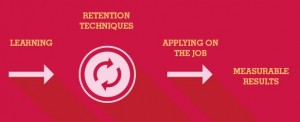Training: The Times, They Are Changing

The times, they are definitely a-changin’ for the call center business. Never before has this industry experienced such a convergence of changes that can have a significant impact on the business:
- Multiple generations in the workplace. For the first time in history, call centers now employ people from as many as four or even five generations. This broad age range creates significant challenges, not only in providing effective training for call center agents, but also in teaching managers and supervisors to manage this diversity in ages and attitudes.
- Retaining and growing employees. Call centers are also recognizing that, to remain competitive on a global scale, they must create long- term opportunities for talented agents, not just be a career stepping stone. This means they must focus on employee development, nurturing talent and developing loyalty and engagement that will reduce turnover and create a stable workforce.
- Virtual agents. Call centers are also recognizing the value of leveraging skilled workers wherever they are, rather than employing them at centralized locations. This approach reduces the overhead of massive facilities, and allows call centers to attract highly skilled workers who value the ability to work at home.
“AS THE PRESENT NOW WILL LATER BE PAST THE ORDER IS RAPIDLY FADIN’ AND THE FIRST ONE NOW WILL LATER BE LAST FOR THE TIMES THEY ARE A-CHANGIN’.”
—Bob Dylan, 1964
At the heart of all these shifts are call center agents. The people who interact with your customers-or your customers’ customers-can make or break your success. A big part of ensuring employee success is in training-not just the onboarding process, but consistent, ongoing training that develops stronger agents who can provide consistent quality customer service, improve first-call resolution and reduce appeasements; all of which directly impact business performance.
To Keep Up, Employee Training Needs to Change
Traditionally, call centers use a combination of classroom and e-learning events during the onboarding process, with additional sessions as needed. But with a globally diverse workforce—many of whom are now virtual—training can become an expensive proposition. Plus event-based classroom or e-learning sessions are susceptible to issues that have been plaguing learning and development professionals since the beginning of corporate training programs:
- Research has demonstrated that people can forget up to 90% of what they learn within 30 days. Typical onboarding and agent training programs are based on one-time learning events, which leave agents susceptible to forgetting what they’ve learned.
- With its “one-size-fits-all” approach, classroom training can’t accommodate multiple generations, or even account for existing knowledge levels. That leaves a large proportion of learners disengaged in the learning, which diminishes retention of anything learned.
- Businesses are in constant motion, and employees need continuous learning to keep up with changes in products and services as well as policies and procedures. Conventional event-based training isn’t suited to continuous learning, which means businesses are either undertraining employees, or sacrificing productivity to accommodate learning.
Brain Science Developments Are Changing Training Approaches
Recent brain science research has helped learning professionals identify several cognitive strategies that result in improvements over traditional training methods, including knowledge retention for the long term, and engaging people more proactively in their own learning. The top four most popular strategies include:
Repeated retrieval. Research has demonstrated that the act of retrieving information from memory—even as few as two times—actually produces a memory trace that’s more permanent. Also known as the testing effect, repeated retrieval injects regular questions and answers into the learning process, helping people retain the correct information for longer periods of time.
The spacing effect. Also known as interval reinforcement or the drip approach, the spacing effect identifies that information is better retained for the long term when it is presented repeatedly with specific time gaps between each repetition. This is in direct contrast to cramming, which involves studying large amounts of data continuously over a short time period.
Chunking. Most memory experts acknowledge that the capacity of short-term memory is about four items, after which most people shut down. In today’s learning environment, chunking is implemented as short bursts or “bites” of learning—dealing with four to five pieces of knowledge for anywhere from 60 seconds to 60 minutes.
Gamification. Gamification is one of the most important elements in the new employee learning paradigm: Because it’s fun, it engages people more fully in the learning process. Gamification typically consists of a variety of game elements including a game-like interface or learning games, leaderboards, prizes and incentives, team activities and social elements.
BRAIN SCIENCE IN THE CALL CENTER
Sitel, a world leader in outsourced customer experience management, has implemented a brain science approach to agent onboarding, and is also using it to develop continuous learning and development for agents and management personnel.
Felix Serrano, SVP & general manager of Work@Home Solutions at Sitel, says, “We use reinforcement as a component of our regular curriculum development. After an asynchronous training module, agents go through a series of questions, which baselines where their knowledge is strongest. When they’re in production, we can reinforce content they learned, and focus on areas that need improvement.”
In fact, during a three-month pilot project, knowledge lifts (number of correct answers) increased in some topics by as much as 50%.
“We’re currently evaluating the right mix of classroom, e-learning and reinforcement training for onboarding, and are expecting that it could help us compress onboarding by up to 30%,” said Serrano. And with at least four different generations in the workforce, gamification elements make training engaging for all learners. Serrano adds, “We know people are enjoying the process of learning, and are retaining more knowledge. This drives a better quality of experience for our customers, and for their customers. During our pilot, we were able to reduce appeasements by 22% to 25% for one of our customers. That’s a direct benefit to the bottom line.”
These brain science developments are being integrated into learning systems and are helping to improve the effectiveness of e-learning. In some cases, all of these techniques are being used, in other cases, only some of them. Here’s how they work together:
Many organizations are implementing daily bite-sized learning for as little as five minutes per day. It doesn’t matter whether the initial knowledge came from a learning management system (LMS) or classroom—key learning points are turned into questions that the employee answers in a short session each day. Questions are repeated over time in a prescribed sequence with appropriate spacing, which thoroughly embeds the learning in long-term memory. With this constant exposure to information learned, it stays top of mind where agents can use it on the job. And over time, it becomes thoroughly ingrained.
SPACING ALLOWS ORGANIZATIONS TO CREATE A CONTINUOUS LEARNING ENVIRONMENT, WEAVING LEARNING INTO EACH AND EVERY WORKDAY.
In fact, some companies are finding that this approach is also effective for presenting new knowledge. In either case, spacing allows organizations to create a continuous learning environment, weaving learning into each and every workday.
And when you deliver this learning within a gamified interface, employee engagement climbs significantly. Because it’s fun gamification creates less resistance to learning and is less stressful than traditional lectures and formal tests. But gamification is more than fun:
- The variety of games available means it’s attractive to your multigenerational workforce.
- Games can be used to teach a variety of subjects.
- Gamification enhances learning retention through repetition, association, elaboration and stories, embedded in learning games.
- Because of the variety of games available, it’s well suited to different domains of learning, including knowledge, skills, attitudes and beliefs.
- Gamification can be used to encourage a competitive spirit and teamwork, which can be particularly compelling for virtual workers.

Change Is Good
When combined, these cognitive strategies dramatically improve knowledge retention and ultimately, job performance. This can significantly contribute to the bottom line for call centers, in a variety of ways:
- Improve the effectiveness of onboarding training. Successful onboarding training is critical to bringing new agents on board, but through the use of new cognitive strategies, it can be made much more effective. By adding reinforcement after classroom or e-learning sessions, knowledge learned can be embedded for the long term, resulting in more knowledgeable agents, and fewer requirements for retraining.
- Improve service levels, including first-call resolution. When employees have more knowledge at their fingertips—or have just learned about an important initiative earlier in the day—they are better able to move to issue resolution more quickly and consistently.
- Reduce attrition rates. Daily training bites is an easy and cost-effective way to provide value-add career training that helps agents improve their skills, supporting not only job goals but personal development goals as well. Gamification elements such as leaderboards, rewards and incentives, team initiatives and social elements can improve participation and foster a sense of belonging, especially critical with a geographically dispersed workforce.
- Reduce appeasements. Armed with more knowledge and skills, agents can be more effective in managing this cost to the business, reducing instances of overcompensation, while ensuring that customers are happy with their issue resolution.
- Improve customer satisfaction scores. With daily training bites, agents can maintain higher levels of knowledge about policies and procedures, as well as products and services. This gives them the ability to more effectively and consistently assist customers, which can go a long way to improving customer satisfaction.
Making the Change for Your Call Center
There are now systems on the market that embed some or all of these cognitive strategies. Some are standalone software systems, others are bolted onto existing learning management systems, and yet others are cloud-based subscription services. They’re not meant to replace your LMS, but to complement it, strengthen it, and ultimately help you improve its ROI; while giving you a way to create a more nimble and flexible approach to employee learning.
BY IMPLEMENTING LEARNING RETENTION TECHNIQUES, YOU CREATE A COMPLETE INTEGRATED LEARNING CONTINUUM… FOR CONSISTENT CUSTOMER SERVICE AND IMPROVED BUSINESS PERFORMANCE.
By implementing these learning retention techniques, you create a complete integrated learning continuum—from learning new knowledge during the onboarding process, to retaining more of the knowledge learned, to using the knowledge for consistent customer service and improved business performance.
The times they may be changing, but changes in cognitive learning strategies and learning echnologies mean that employee training can help you embrace the changes, and flourish.
– Reprinted with permission from Contact Center Pipeline, http://www.contactcenterpipeline.com


